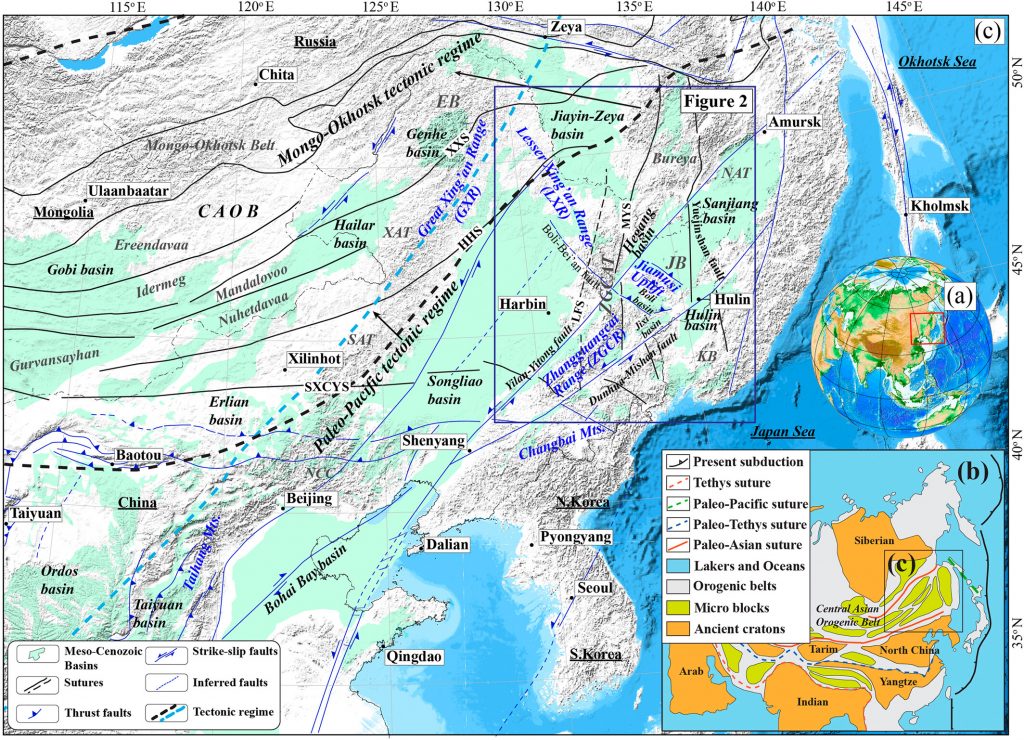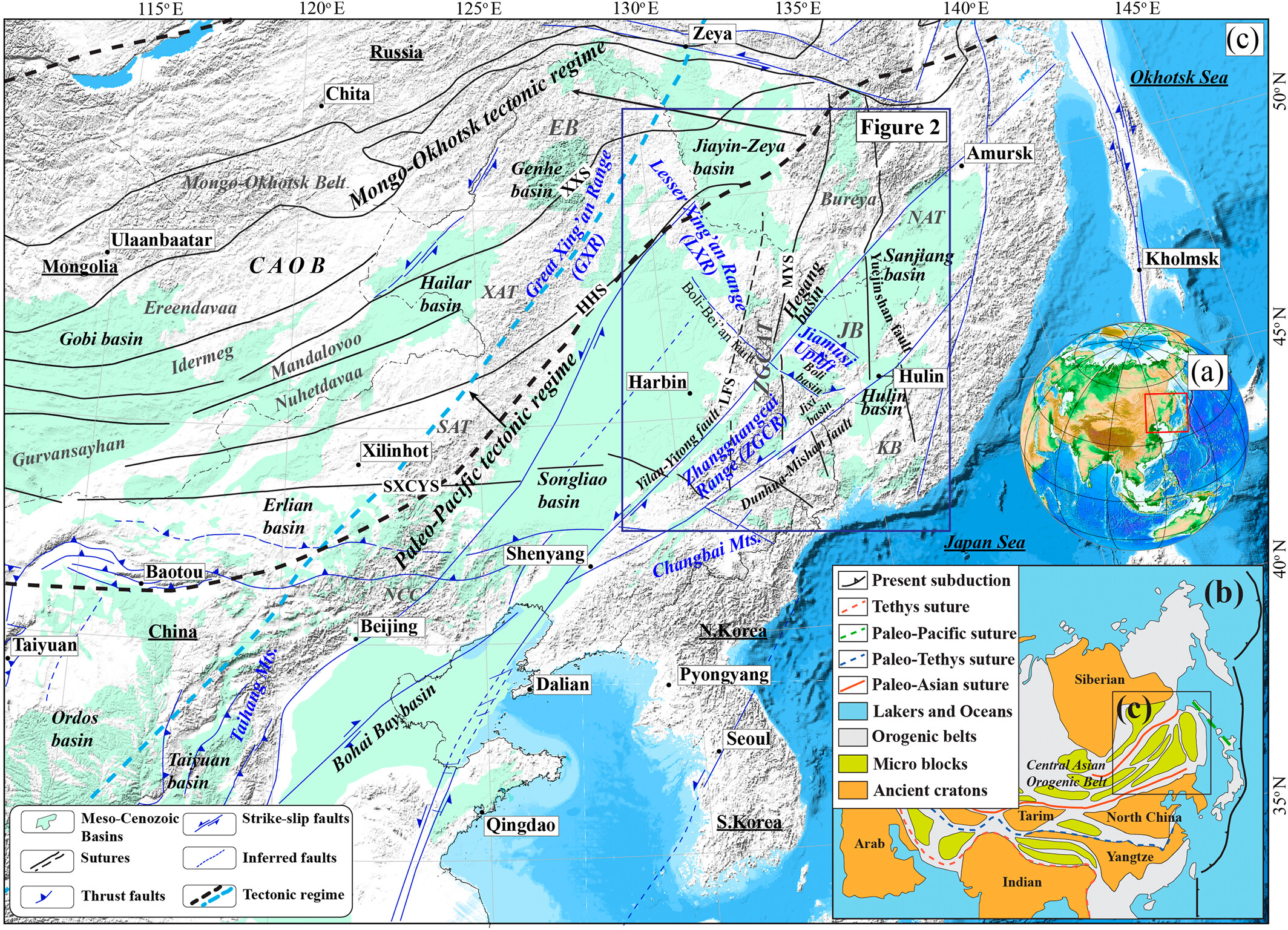Since the Mesozoic, eastern NE Asia has experienced multiple tectonic events, resulting in a complex structure and forming one of the world’s largest Meso-Cenozoic lacustrine basin systems. Presently, basin evolution models require further elucidation regarding the simultaneous generation of diverse rift basins and the potential impact stemming from the closure of the Mudanjiang Ocean, whose oceanic closure demarcated the boundary between the Songliao Basin and the eastern basins, raises questions about its influence on the development of the basin-and-range system. To address these questions, we augment new low-temperature thermochronological data on basement highs separating the eastern NE Asia basins to investigate the shallow-deep coupling process of tectonic evolution since the Mesozoic. The new cooling age pattern shows non-overlapping and spatial differences among major basement highs. Inverse thermal modeling revealed five-stage cooling episodes among the basement highs, but with different onset and cooling rates of each episode, indicating a significant differential uplift mode. A major reburial stage was identified throughout eastern NE Asia during the mid-Cretaceous. Compiling cooling age patterns and inverse thermal modeling, we note the existence of a proto-basin covering an area much larger than the previously contemplated “Pan-Sanjiang” Basin. In general, our study indicates the final closure of the Mudanjiang Ocean occurred at ca. 150–140 Ma. Since the Early Cretaceous, with changes in the subduction direction, two-stage flat slab subduction of the Paleo-Pacific plate and the consequent subduction of the Pacific plate co-dominated the basements’ differential uplift and the formation of the eastern NE Asia basin-and-range framework.

![]()

